 Facebook
Facebook
 X
X
 Instagram
Instagram
 TikTok
TikTok
 Youtube
Youtube
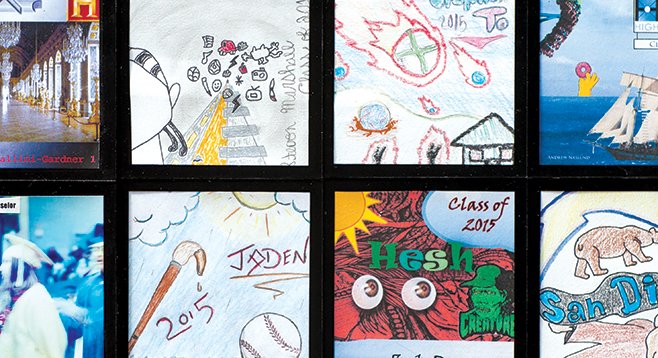
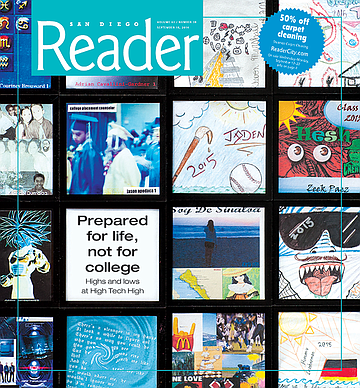
Where most school websites are built for parents who need calendar information or want to check out next year’s fourth-grade teachers, High Tech High’s is a full-fledged marketing campaign.
Many of the pages include statistics, awards the organization has won, and links to “feature projects.” As a parent, it’s impossible not to get excited when reading that that 98 percent of graduates have gone on to college or that African-American students outperform their district and statewide peers by 100 percent in math.
And the projects? I am completely seduced by the idea of my daughter participating in projects like this:
“The blood bank project: This project was a collaboration between the San Diego Blood Bank and HTH seniors, as well as between an art teacher and a biology/multimedia teacher. Divided into pairs, students explored bloody topics ranging from leukemia, sickle cell anemia and the Aids epidemic to the use of blood in film, the history of vampires, and the role of blood in religion. They then created a painting on a blood-related theme on a large piece of custom cut wood. A rectangular opening housed a laptop displaying a DVD presentation with audio and motion graphics they had designed to teach the community about their topic. Students’ final projects were exhibited at the JETT Art Gallery in San Diego.”
Or this:
Analogue Flash for Windows. “The assignment for this senior project was to create an interactive, museum-quality exhibit that fit in a window frame and illustrated a principle of math or physics. Analog: most of the projects were mechanical. Flash: like products created with the Adobe Flash software, the products were interactive. For Windows: the products were made not for PCs, but for the actual 24" x 24" x 5" interior windows in High Tech High.
“Timelines and Check-ins. The project took a whole semester, and the students worked on it nearly every day. We used an online calendar and weekly check-ins to make sure that no one was falling behind. We were very strict because we wanted all of the groups finished by the deadline. Books:
Students taught each other the content behind their projects, while creating their own books that included images and explanations of the physics and math for all the windows. Exam:
The students took a final exam on the math and physics represented in all the projects. They were allowed to bring the books they had made to the exam, and the exam comprised one fourth of their final grade.”
At first, it’s difficult to get a handle on exactly what project-based learning looks like. I found an illustrated video by High Tech High art teacher, Jeff Robin, which sums up the concept by contrasting it to what it’s not. The video compares project-based learning to project-oriented learning in traditional schools. One main difference between the two is that in project-oriented learning, students are expected to learn all the information needed before doing the sugar cube or poster-board project, whereas in project-oriented learning, students learn the information through doing the project.
All projects are designed by the teachers, and all culminate in a product or performance and include public demonstrations of some kind — presentations, exhibitions, and so on.
Last school year, a group of 52 sophomores at High Tech raised $35,150 through Kickstarter to purchase a food truck for use in a nonprofit business that will “promote cultural understanding through food and films.” When it’s up and running, the Reel Delicious truck will travel to community festivals, screening student films and serving up Latin American/Asian fusion dishes, such as Asada Egg Rolls and Kimchiadilla.
The project began in September 2013, and by the time they purchased the food truck in December 2013, they had already created a business plan, consulted chefs and restaurateurs, sourced local ingredients, and started the screening process for films.
The idea of my daughter spending her school days researching leukemia or troubleshooting a pulley system instead of taking notes from a chalkboard is a major selling point for me. And whoever designed the High Tech website did a great job of making sure I have plenty of access points to get acquainted with the projects. But one must weigh the pros and cons. The website, of course, offered no cons. And Yelp wasn’t much of a help, although a 2004 graduate did offer a rather lengthy and helpful list of pluses and minuses, which included “some of the best reading assignments” in an intro to college English class, and “HTH didn’t teach me how to study.” Most of the other reviews were either hugely positive (“A tremendous, public, tuition free, liberal arts charter school where 99% of the graduates go on to college. Nice work!”) or angry (“Bad, bad liberals!”).
The self-starter
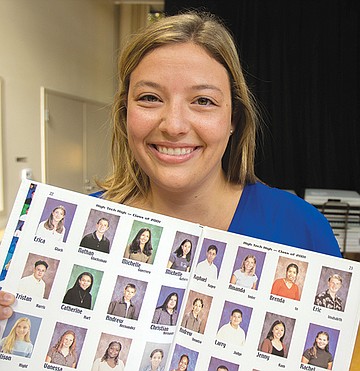
On a warm Wednesday morning in early March, Amanda Cole (née Imler) meets me in front of the original High Tech High building in Point Loma. Cole graduated with High Tech’s first graduating class in 2003, the same year I visited. Today, she’s an ICU nurse at Sharp who takes advantage of the hospital’s humanitarian paid leave program. Two days from now, she’ll leave on a two-week trip to Ghana where she’ll work as a recovery nurse in a free open-heart surgery clinic. This time, she’ll have a little less responsibility than her previous four trips to the highlands of Guatemala, during which she managed a team of as many as 40 nurses and ran the whole recovery ward of the surgery clinic.
“Managing people, how to interview someone, that’s all stuff I learned here,” she tells me as we head toward the building. “How to organize things, how to write guidelines of care, how to empower a team, it’s all stuff that started here.”
It’s lunchtime for the middle-schoolers whose building overlooks Cole’s former high school. We’re surrounded by tweeners lounging in the common outdoor space between the high school and middle school buildings. Some sit in circles on the sidewalk, others kick balls on the grass near the parking lot.
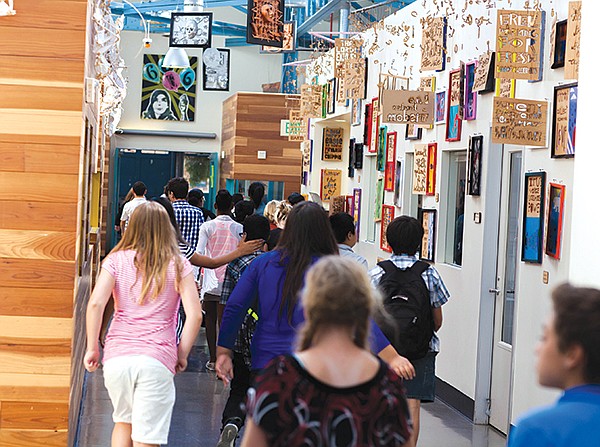

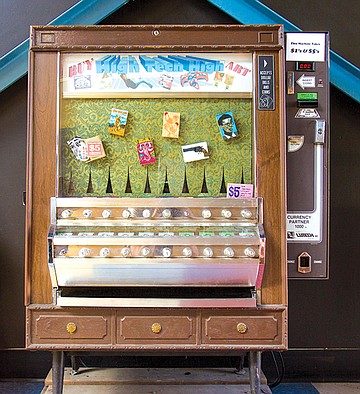
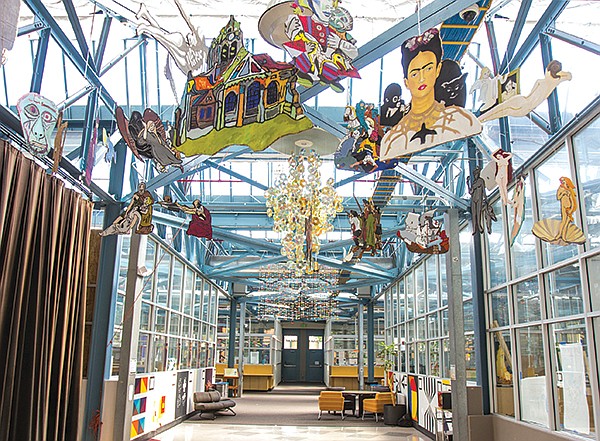
Inside the school, at the front desk, the site manager gives us visitor badges. A sign on the wall reads: “.21 Km from reception desk to Starbucks. We head down an open hallway with high ceilings and walls covered with student art and the occasional mural painted by faculty.
A tall young man in a Hawaiian print shirt, shorts, and flip-flops passes us, and Cole informs me that the dress code has undergone big changes. The first year, polo shirts and khaki pants were mandatory. By the second year, the code (not a uniform, but a “strong dress code”) morphed to “business casual.”
“At any time, Bill Gates could walk in the door, so none of us were going to wear regular clothes,” she says. “I gave a tour to Arnold Schwarzenegger once. He was just coming to check out the school, and I toured him and Maria [Shriver]around. I mean, you didn’t want to be wearing jeans and a T-shirt. You had to look nice, just in case.”
Today, as far as I can tell, the kids wear whatever they want. I see jeans, sweatshirts, sneakers, babydoll dresses with combat boots, and pretty much everything in between. No one wears anything that would pass for “business casual.” There is, however, less skin than you might see on a typical high school campus.
In the spring of 2000, at the end of Cole’s eighth-grade year at Muirlands Middle School in La Jolla, her parents received a flier about the new High Tech High that would open in Point Loma in September. The original concept, says the school’s site, was “conceived by a group of about 40 civic and high tech industry leaders in San Diego” that would address the “‘digital divide’ that resulted in low numbers of women and ethnic minority groups entering the fields of math, science, and engineering.”
Cole planned to go to La Jolla High. But when her parents began selling the concept of High Tech High to her younger brother, she made it clear that the idea appealed to her, too.
“I was, like, ‘Wait. Hold on. I want to go there,’” she says. “I knew I wanted to go into the medical field, and I didn’t want to go to La Jolla High and be burdened down with all the nonsense that goes on there. I wasn’t cool. I was just a smart kid who wanted to go to a good school and work hard.”
The hallway spills out onto a large open area flooded with natural light from skylights and high windows.
“This is the Great Room,” Cole says. “It has not changed at all except there are tables in here.”
A nearby student says, “Commons. It’s the Commons. Not Great Room.”
“Oh. Okay. So the name has changed,” Cole says.
We sit down on a couch at the edge of the open space. A group of three students gathers around a laptop on one of the tables set up against the far wall. Another two hunch over a piece of poster board on a round table a few feet away from where we sit. A young man reads a book on a lounge chair. I’m struck with a sense of nostalgia, not for high school but college.
“Creating a new language of design, both spatially and verbally, helps give form to the HTH vision,” the High Tech High website reads.
Besides the Commons, other key design elements include seminar rooms, studio areas, gallery spaces, and outdoor learning spaces.
“The whole idea was, ‘This is a workplace,’” Cole says. “They let you work in groups, like these kids here, they’re working together and studying, and it’s not completely structured time. Because when you’re a grown-up, you have to structure your own time. It worked for me.”
A bearded man stops in front of our couch to greet Cole. Turns out it’s Jeff Robin, the art teacher who inspired her to combine her pre-med chemistry major with an art major at Westmont College. “I taught her everything she knows,” he jokes before he heads on his way with good wishes for her trip to Ghana.
In college, Cole found her High Tech High education to be both an asset and a disadvantage. Presentations, writing, and computer skills she says were her strong suits. Multiple choice, not so much.
“When you’re learning everything through projects, it’s just very different when a professor says, ‘Read a chapter, and you’re going to be tested.’ it’s just very different. For me, it was the multiple choice that I was, like, ‘Oh, I’ve never seen this since middle school,’” she says.
After Westmont, and then later in graduate school at San Diego State University, she was surprised by some of the deficiencies in other people’s educational experiences.
“I was, like, ‘You don’t know how to write a résumé? I knew how to write a résumé when I was 13, and I got an internship at the Salk Institute,’” she says. “It was just foreign to me that people didn’t know how to do things I knew how to do. And they knew how to do things I didn’t, like studying for a test, like flashcards and things like that.”
Although she didn’t know much about computers when she began at High Tech High, by the time she got to college, Cole was the go-to girl for computer help. And a Cisco networking class she took during her days here gave her a love for “all things tech and tech troubleshooting,” which led her interests in the medical field toward ICU nursing.
“In [this] field, we work with so many strange devices — heart pumps, dialysis machines,” she says. “It’s constant caring for very sick patients, but it’s also this aspect of you’ve got to be good with the tech. You’ve got to know what you’re doing, and you’ve got to be able to troublshoot.’”
Cole says the unfamiliarity with test-taking is the only negative she would associate with her High Tech High education. It wasn’t enough to cause her any major problems. Although she had a rough first semester, she soon adjusted to the new way of learning presented at Westmont. She attributes the brevity of her adjustment period to her experience in traditional elementary and middle schools.
“It was the perfect mix for me. I think you have to balance this type of different education with a traditional education, like with tests and periods and lockers,” she says. “The kids that are starting young and going through the program are incredibly communicative, they have wonderful people skills, they know what they want, they know about all sorts of things. I think that’s going to create a really incredible worker in the future, but will they have trouble if colleges remain traditional? I don’t know.”
But it’s not the lack of test-taking skills taught that causes her to hesitate when I ask whether she’ll send her future kids to High Tech High.
“I don’t think it’s for everyone,” she says. “A kid that’s not a strong self-starter, or a kid who doesn’t know how to manage their own schedule isn’t going to do well here.”
Hey, I kind of like this
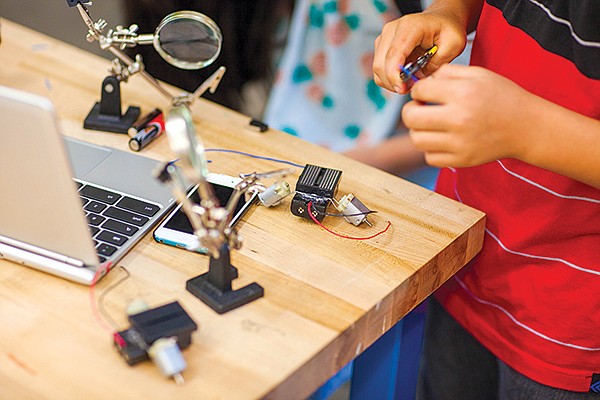
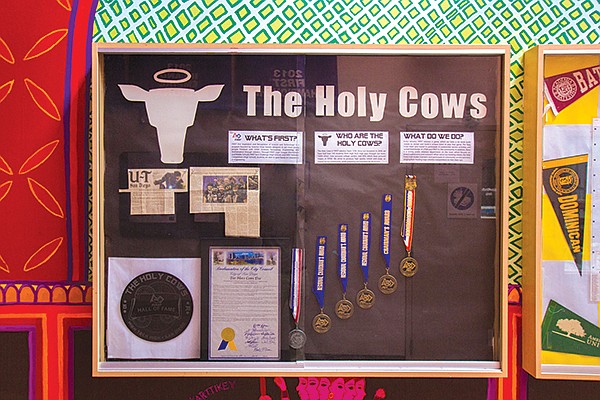
The Valley View Casino Center teems with high-schoolers thrusting pom poms in the air, some wearing the colors of their respective schools (red and yellow, green and black, and so on) and some sporting eye black on their faces — football style. A lion mascot walks around in full costume. Wigs, face paint, fauxhawks, mohawks, and quirky accessories give the arena a festive vibe. The San Diego FIRST Robotics Competition is in full swing.
Near the entrance, two young men sit at a table looking official in black polo shirts. Turns out they are High Tech High juniors, and up close, their shirts bear a logo of a cow head with a halo. Jacob Arroyo is in charge of greeting VIP guests, and Nicholas Olamendi Smith, manager of community development for the Holy Cows, High Tech High’s robotics team. Their experience at High Tech High has prepared them for just this moment: when a strange woman approaches and wants to talk about their school, both young men stand with their hands clasped in front of them, serious-faced and happy to help.
Arroyo says he knew High Tech High was right for him as soon as he started as a freshman.
“I grew up in a traditional school with textbooks and 45 minutes of sitting in class and listening to a lecture. I’m not into that,” he says. “But when I was introduced to this project-based learning, it instantly clicked for me. I worked well with other students to get work done. It was just a better fit for me.”
Nicholas Olamendi Smith, who began in middle school, was less sure. “The transition of going from textbooks to project-based learning was very rough because I wasn’t used to it,” he says. “For me, it was the amount of work we got. Instead of getting consecutive worksheets and worksheets and worksheets, you’d get one big project and this timeline you can do it in. And you make your own schedule.”
“Yeah, time management was a big adjustment,” Arroyo says. “Definitely.”
Olamendi Smith goes on to say that once he got the hang of it, the project-based model helped him understand the material more in depth.
Both of them admit that they’ve heard studying in college can be tough for a High Tech High graduate. But they’re both willing to face the challenge they’ll likely encounter in traditional four-year universities. They have to, they say, because of their chosen fields of study: neuroscience and electrical engineering.
“Most of the top colleges that offer electrical engineering are part of the traditional four-year [system],” Nicholas says.
Arroyo says he’s not too concerned about the challenges of traditional schooling. “I feel as if High Tech High students are strong enough independently to work their way through [the challenges],” he says.
When I remark that both of them seem uncommonly sure about the direction of their future studies, Arroyo attributes it to their high school.
“The independence that High Tech High gives you is, like, ‘We’re trusting you that you’re going to do the right thing managing your time, so we’re going to let you do this,’” he says. “You get a lot of independent time to work with different subjects, especially when you have collaborations with biology and humanities, or history and science, or math and bio, or math and chem, or chem and humanities. It makes you go, ‘Hey, I kind of like this. Maybe I should look into it more,’ and that’s when you start to figure out what you’re into.”
I hated college
For a few days, I watch my daughter closely and try to figure out if she’s a High Tech girl. When she adds “clean up trash around the naverhood” to a list of options for making some extra income outside of her allowance, I think, Outside the box. Entrepreneurial. Definitely High Tech. When I have to call her 400 times to come down for breakfast now so we’re not late for school, and she comes down on the 401st time, still not dressed, I think, Needs more structure. Not High Tech. And while she’s waiting her turn at gymnastics class, instead of standing in line, she’s all over the place, on the floor, jumping around, dancing, looking at the ceiling. I’m stumped as to whether this means she needs more structure or less.
So I call my mom.
“I’m not judging you, but she does have a lot of freedom at home,” she says. “So a structured environment might be the way to go for now. Maybe it’s better for her to learn a little more discipline at school.”
“I’m not judging you” rings in my ears for days. It doesn’t help.

Two days later, a guy named Anthony Conwright says the words I want to hear.
“I think you can tell what kind of person someone is when you first meet them,” he says directly after stating, “Every system isn’t the best for every student.”
“You mean, if I bring my daughter to you, you’ll be able to tell me if she should be at High Tech High?” I ask.
“Oh, yeah, very quickly. You can just see it,” he says. “I’ve been here for almost ten years of my life.”
Not only did Conwright graduate from High Tech High (with Cole’s class), he’s also been teaching at High Tech Middle Media Arts for four years, and he worked in the school’s office before he began teaching. And he has a niece, a nephew, a brother, a sister, and two cousins who have gone to High Tech schools.
We’re sitting in his classroom on Truxtun Road in the quiet moments following a chaotic game of Jeopardy with 26 sixth-graders. The room smells of desk cleaner, which a dedicated group of three sprayed generously before piling out of the room with the rest of their peers. The energetic crew (including one girl who barraged me with questions about my relationship with Conwright: “Are you his girlfriend? His wife? Do you want to be? Are you his sister? His friend? How do you know him?”) has left me stunned in its wake, and Conwright assures me he doesn’t have a single one this year that he thinks might be better served elsewhere.
He lists for me the reasons a student might not be suited to High Tech High.
“If you need a ton of structure, if you need a lot of support, if you really really need more linear type things, or if you’re really into sports,” he says, “then, no.”
As far as his own story goes, Conwright differs from Cole in that the difficulties he encountered in college were not just something to get through and learn from; instead, they gave him a profound and lasting distaste for college.
“I hated college. I didn’t adjust well,” he says. “[At High Tech High] I felt like I was in an environment where I was pushed to branch out and explore things and be open. And then [at the University of San Diego] it was like I was suddenly put in this box.”
His discomfort was in part due to the predominantly white population at USD (he’s African American), but he had also become accustomed to a different way of learning, and he didn’t feel much more comfortable at Grossmont, Cuyamaca, or San Diego State University.
“It’s almost like being in the future and then going back to the past,” he says. “I mean, you have this incredible experience in high school where you are ready for the workplace, and a lot of the things you’re doing are extremely relevant to the workplace. And then all of a sudden, you’re back and everything’s kind of dumbed down when you go to college.”
He felt baffled by fellow classmates who had “no concept of being in the workplace and using that as a way to drive what you learn.” The out-of-place experience resulted in a loss in confidence for Conwright and an aversion to the whole college experience.
“I couldn’t sit down and read a 60-page work assignment and answer 30 questions. And to sit down and take a multiple choice, and sit down and not have a voice in my class because my teacher would just sit and talk...that was hard for me,” he says. “I have a hard time doing something I don’t believe in.”
In the end, Conwright earned his credentials through the teaching academy at High Tech High. And while he believes the High Tech High way of teaching and learning suits him, he also believes a traditional high school might have better prepared him for a typical college education. But that’s not enough to make him wish he had made a different choice for where to obtain his high school education.
Had he gone the traditional route, he says, “I wouldn’t have been prepared to have life experiences.”
By the time I’m getting ready to leave Conwright to the stack of papers on his desk, I feel even more confused about whether or not I should accept if my daughter makes the cut in the High Tech High lottery. I bring it up one more time.
“I think I’m High Tech High material,” I say. “But I want to make sure I’m not just projecting it onto my daughter if it’s not for her.”
Conwright leans back in his chair, projecting an oracle-like vibe. “Well, bring her by,” he says.



Where most school websites are built for parents who need calendar information or want to check out next year’s fourth-grade teachers, High Tech High’s is a full-fledged marketing campaign.
Many of the pages include statistics, awards the organization has won, and links to “feature projects.” As a parent, it’s impossible not to get excited when reading that that 98 percent of graduates have gone on to college or that African-American students outperform their district and statewide peers by 100 percent in math.
And the projects? I am completely seduced by the idea of my daughter participating in projects like this:
“The blood bank project: This project was a collaboration between the San Diego Blood Bank and HTH seniors, as well as between an art teacher and a biology/multimedia teacher. Divided into pairs, students explored bloody topics ranging from leukemia, sickle cell anemia and the Aids epidemic to the use of blood in film, the history of vampires, and the role of blood in religion. They then created a painting on a blood-related theme on a large piece of custom cut wood. A rectangular opening housed a laptop displaying a DVD presentation with audio and motion graphics they had designed to teach the community about their topic. Students’ final projects were exhibited at the JETT Art Gallery in San Diego.”
Or this:
Analogue Flash for Windows. “The assignment for this senior project was to create an interactive, museum-quality exhibit that fit in a window frame and illustrated a principle of math or physics. Analog: most of the projects were mechanical. Flash: like products created with the Adobe Flash software, the products were interactive. For Windows: the products were made not for PCs, but for the actual 24" x 24" x 5" interior windows in High Tech High.
“Timelines and Check-ins. The project took a whole semester, and the students worked on it nearly every day. We used an online calendar and weekly check-ins to make sure that no one was falling behind. We were very strict because we wanted all of the groups finished by the deadline. Books:
Students taught each other the content behind their projects, while creating their own books that included images and explanations of the physics and math for all the windows. Exam:
The students took a final exam on the math and physics represented in all the projects. They were allowed to bring the books they had made to the exam, and the exam comprised one fourth of their final grade.”
At first, it’s difficult to get a handle on exactly what project-based learning looks like. I found an illustrated video by High Tech High art teacher, Jeff Robin, which sums up the concept by contrasting it to what it’s not. The video compares project-based learning to project-oriented learning in traditional schools. One main difference between the two is that in project-oriented learning, students are expected to learn all the information needed before doing the sugar cube or poster-board project, whereas in project-oriented learning, students learn the information through doing the project.
All projects are designed by the teachers, and all culminate in a product or performance and include public demonstrations of some kind — presentations, exhibitions, and so on.
Last school year, a group of 52 sophomores at High Tech raised $35,150 through Kickstarter to purchase a food truck for use in a nonprofit business that will “promote cultural understanding through food and films.” When it’s up and running, the Reel Delicious truck will travel to community festivals, screening student films and serving up Latin American/Asian fusion dishes, such as Asada Egg Rolls and Kimchiadilla.
The project began in September 2013, and by the time they purchased the food truck in December 2013, they had already created a business plan, consulted chefs and restaurateurs, sourced local ingredients, and started the screening process for films.
The idea of my daughter spending her school days researching leukemia or troubleshooting a pulley system instead of taking notes from a chalkboard is a major selling point for me. And whoever designed the High Tech website did a great job of making sure I have plenty of access points to get acquainted with the projects. But one must weigh the pros and cons. The website, of course, offered no cons. And Yelp wasn’t much of a help, although a 2004 graduate did offer a rather lengthy and helpful list of pluses and minuses, which included “some of the best reading assignments” in an intro to college English class, and “HTH didn’t teach me how to study.” Most of the other reviews were either hugely positive (“A tremendous, public, tuition free, liberal arts charter school where 99% of the graduates go on to college. Nice work!”) or angry (“Bad, bad liberals!”).
The self-starter

On a warm Wednesday morning in early March, Amanda Cole (née Imler) meets me in front of the original High Tech High building in Point Loma. Cole graduated with High Tech’s first graduating class in 2003, the same year I visited. Today, she’s an ICU nurse at Sharp who takes advantage of the hospital’s humanitarian paid leave program. Two days from now, she’ll leave on a two-week trip to Ghana where she’ll work as a recovery nurse in a free open-heart surgery clinic. This time, she’ll have a little less responsibility than her previous four trips to the highlands of Guatemala, during which she managed a team of as many as 40 nurses and ran the whole recovery ward of the surgery clinic.
“Managing people, how to interview someone, that’s all stuff I learned here,” she tells me as we head toward the building. “How to organize things, how to write guidelines of care, how to empower a team, it’s all stuff that started here.”
It’s lunchtime for the middle-schoolers whose building overlooks Cole’s former high school. We’re surrounded by tweeners lounging in the common outdoor space between the high school and middle school buildings. Some sit in circles on the sidewalk, others kick balls on the grass near the parking lot.




Inside the school, at the front desk, the site manager gives us visitor badges. A sign on the wall reads: “.21 Km from reception desk to Starbucks. We head down an open hallway with high ceilings and walls covered with student art and the occasional mural painted by faculty.
A tall young man in a Hawaiian print shirt, shorts, and flip-flops passes us, and Cole informs me that the dress code has undergone big changes. The first year, polo shirts and khaki pants were mandatory. By the second year, the code (not a uniform, but a “strong dress code”) morphed to “business casual.”
“At any time, Bill Gates could walk in the door, so none of us were going to wear regular clothes,” she says. “I gave a tour to Arnold Schwarzenegger once. He was just coming to check out the school, and I toured him and Maria [Shriver]around. I mean, you didn’t want to be wearing jeans and a T-shirt. You had to look nice, just in case.”
Today, as far as I can tell, the kids wear whatever they want. I see jeans, sweatshirts, sneakers, babydoll dresses with combat boots, and pretty much everything in between. No one wears anything that would pass for “business casual.” There is, however, less skin than you might see on a typical high school campus.
In the spring of 2000, at the end of Cole’s eighth-grade year at Muirlands Middle School in La Jolla, her parents received a flier about the new High Tech High that would open in Point Loma in September. The original concept, says the school’s site, was “conceived by a group of about 40 civic and high tech industry leaders in San Diego” that would address the “‘digital divide’ that resulted in low numbers of women and ethnic minority groups entering the fields of math, science, and engineering.”
Cole planned to go to La Jolla High. But when her parents began selling the concept of High Tech High to her younger brother, she made it clear that the idea appealed to her, too.
“I was, like, ‘Wait. Hold on. I want to go there,’” she says. “I knew I wanted to go into the medical field, and I didn’t want to go to La Jolla High and be burdened down with all the nonsense that goes on there. I wasn’t cool. I was just a smart kid who wanted to go to a good school and work hard.”
The hallway spills out onto a large open area flooded with natural light from skylights and high windows.
“This is the Great Room,” Cole says. “It has not changed at all except there are tables in here.”
A nearby student says, “Commons. It’s the Commons. Not Great Room.”
“Oh. Okay. So the name has changed,” Cole says.
We sit down on a couch at the edge of the open space. A group of three students gathers around a laptop on one of the tables set up against the far wall. Another two hunch over a piece of poster board on a round table a few feet away from where we sit. A young man reads a book on a lounge chair. I’m struck with a sense of nostalgia, not for high school but college.
“Creating a new language of design, both spatially and verbally, helps give form to the HTH vision,” the High Tech High website reads.
Besides the Commons, other key design elements include seminar rooms, studio areas, gallery spaces, and outdoor learning spaces.
“The whole idea was, ‘This is a workplace,’” Cole says. “They let you work in groups, like these kids here, they’re working together and studying, and it’s not completely structured time. Because when you’re a grown-up, you have to structure your own time. It worked for me.”
A bearded man stops in front of our couch to greet Cole. Turns out it’s Jeff Robin, the art teacher who inspired her to combine her pre-med chemistry major with an art major at Westmont College. “I taught her everything she knows,” he jokes before he heads on his way with good wishes for her trip to Ghana.
In college, Cole found her High Tech High education to be both an asset and a disadvantage. Presentations, writing, and computer skills she says were her strong suits. Multiple choice, not so much.
“When you’re learning everything through projects, it’s just very different when a professor says, ‘Read a chapter, and you’re going to be tested.’ it’s just very different. For me, it was the multiple choice that I was, like, ‘Oh, I’ve never seen this since middle school,’” she says.
After Westmont, and then later in graduate school at San Diego State University, she was surprised by some of the deficiencies in other people’s educational experiences.
“I was, like, ‘You don’t know how to write a résumé? I knew how to write a résumé when I was 13, and I got an internship at the Salk Institute,’” she says. “It was just foreign to me that people didn’t know how to do things I knew how to do. And they knew how to do things I didn’t, like studying for a test, like flashcards and things like that.”
Although she didn’t know much about computers when she began at High Tech High, by the time she got to college, Cole was the go-to girl for computer help. And a Cisco networking class she took during her days here gave her a love for “all things tech and tech troubleshooting,” which led her interests in the medical field toward ICU nursing.
“In [this] field, we work with so many strange devices — heart pumps, dialysis machines,” she says. “It’s constant caring for very sick patients, but it’s also this aspect of you’ve got to be good with the tech. You’ve got to know what you’re doing, and you’ve got to be able to troublshoot.’”
Cole says the unfamiliarity with test-taking is the only negative she would associate with her High Tech High education. It wasn’t enough to cause her any major problems. Although she had a rough first semester, she soon adjusted to the new way of learning presented at Westmont. She attributes the brevity of her adjustment period to her experience in traditional elementary and middle schools.
“It was the perfect mix for me. I think you have to balance this type of different education with a traditional education, like with tests and periods and lockers,” she says. “The kids that are starting young and going through the program are incredibly communicative, they have wonderful people skills, they know what they want, they know about all sorts of things. I think that’s going to create a really incredible worker in the future, but will they have trouble if colleges remain traditional? I don’t know.”
But it’s not the lack of test-taking skills taught that causes her to hesitate when I ask whether she’ll send her future kids to High Tech High.
“I don’t think it’s for everyone,” she says. “A kid that’s not a strong self-starter, or a kid who doesn’t know how to manage their own schedule isn’t going to do well here.”
Hey, I kind of like this


The Valley View Casino Center teems with high-schoolers thrusting pom poms in the air, some wearing the colors of their respective schools (red and yellow, green and black, and so on) and some sporting eye black on their faces — football style. A lion mascot walks around in full costume. Wigs, face paint, fauxhawks, mohawks, and quirky accessories give the arena a festive vibe. The San Diego FIRST Robotics Competition is in full swing.
Near the entrance, two young men sit at a table looking official in black polo shirts. Turns out they are High Tech High juniors, and up close, their shirts bear a logo of a cow head with a halo. Jacob Arroyo is in charge of greeting VIP guests, and Nicholas Olamendi Smith, manager of community development for the Holy Cows, High Tech High’s robotics team. Their experience at High Tech High has prepared them for just this moment: when a strange woman approaches and wants to talk about their school, both young men stand with their hands clasped in front of them, serious-faced and happy to help.
Arroyo says he knew High Tech High was right for him as soon as he started as a freshman.
“I grew up in a traditional school with textbooks and 45 minutes of sitting in class and listening to a lecture. I’m not into that,” he says. “But when I was introduced to this project-based learning, it instantly clicked for me. I worked well with other students to get work done. It was just a better fit for me.”
Nicholas Olamendi Smith, who began in middle school, was less sure. “The transition of going from textbooks to project-based learning was very rough because I wasn’t used to it,” he says. “For me, it was the amount of work we got. Instead of getting consecutive worksheets and worksheets and worksheets, you’d get one big project and this timeline you can do it in. And you make your own schedule.”
“Yeah, time management was a big adjustment,” Arroyo says. “Definitely.”
Olamendi Smith goes on to say that once he got the hang of it, the project-based model helped him understand the material more in depth.
Both of them admit that they’ve heard studying in college can be tough for a High Tech High graduate. But they’re both willing to face the challenge they’ll likely encounter in traditional four-year universities. They have to, they say, because of their chosen fields of study: neuroscience and electrical engineering.
“Most of the top colleges that offer electrical engineering are part of the traditional four-year [system],” Nicholas says.
Arroyo says he’s not too concerned about the challenges of traditional schooling. “I feel as if High Tech High students are strong enough independently to work their way through [the challenges],” he says.
When I remark that both of them seem uncommonly sure about the direction of their future studies, Arroyo attributes it to their high school.
“The independence that High Tech High gives you is, like, ‘We’re trusting you that you’re going to do the right thing managing your time, so we’re going to let you do this,’” he says. “You get a lot of independent time to work with different subjects, especially when you have collaborations with biology and humanities, or history and science, or math and bio, or math and chem, or chem and humanities. It makes you go, ‘Hey, I kind of like this. Maybe I should look into it more,’ and that’s when you start to figure out what you’re into.”
I hated college
For a few days, I watch my daughter closely and try to figure out if she’s a High Tech girl. When she adds “clean up trash around the naverhood” to a list of options for making some extra income outside of her allowance, I think, Outside the box. Entrepreneurial. Definitely High Tech. When I have to call her 400 times to come down for breakfast now so we’re not late for school, and she comes down on the 401st time, still not dressed, I think, Needs more structure. Not High Tech. And while she’s waiting her turn at gymnastics class, instead of standing in line, she’s all over the place, on the floor, jumping around, dancing, looking at the ceiling. I’m stumped as to whether this means she needs more structure or less.
So I call my mom.
“I’m not judging you, but she does have a lot of freedom at home,” she says. “So a structured environment might be the way to go for now. Maybe it’s better for her to learn a little more discipline at school.”
“I’m not judging you” rings in my ears for days. It doesn’t help.

Two days later, a guy named Anthony Conwright says the words I want to hear.
“I think you can tell what kind of person someone is when you first meet them,” he says directly after stating, “Every system isn’t the best for every student.”
“You mean, if I bring my daughter to you, you’ll be able to tell me if she should be at High Tech High?” I ask.
“Oh, yeah, very quickly. You can just see it,” he says. “I’ve been here for almost ten years of my life.”
Not only did Conwright graduate from High Tech High (with Cole’s class), he’s also been teaching at High Tech Middle Media Arts for four years, and he worked in the school’s office before he began teaching. And he has a niece, a nephew, a brother, a sister, and two cousins who have gone to High Tech schools.
We’re sitting in his classroom on Truxtun Road in the quiet moments following a chaotic game of Jeopardy with 26 sixth-graders. The room smells of desk cleaner, which a dedicated group of three sprayed generously before piling out of the room with the rest of their peers. The energetic crew (including one girl who barraged me with questions about my relationship with Conwright: “Are you his girlfriend? His wife? Do you want to be? Are you his sister? His friend? How do you know him?”) has left me stunned in its wake, and Conwright assures me he doesn’t have a single one this year that he thinks might be better served elsewhere.
He lists for me the reasons a student might not be suited to High Tech High.
“If you need a ton of structure, if you need a lot of support, if you really really need more linear type things, or if you’re really into sports,” he says, “then, no.”
As far as his own story goes, Conwright differs from Cole in that the difficulties he encountered in college were not just something to get through and learn from; instead, they gave him a profound and lasting distaste for college.
“I hated college. I didn’t adjust well,” he says. “[At High Tech High] I felt like I was in an environment where I was pushed to branch out and explore things and be open. And then [at the University of San Diego] it was like I was suddenly put in this box.”
His discomfort was in part due to the predominantly white population at USD (he’s African American), but he had also become accustomed to a different way of learning, and he didn’t feel much more comfortable at Grossmont, Cuyamaca, or San Diego State University.
“It’s almost like being in the future and then going back to the past,” he says. “I mean, you have this incredible experience in high school where you are ready for the workplace, and a lot of the things you’re doing are extremely relevant to the workplace. And then all of a sudden, you’re back and everything’s kind of dumbed down when you go to college.”
He felt baffled by fellow classmates who had “no concept of being in the workplace and using that as a way to drive what you learn.” The out-of-place experience resulted in a loss in confidence for Conwright and an aversion to the whole college experience.
“I couldn’t sit down and read a 60-page work assignment and answer 30 questions. And to sit down and take a multiple choice, and sit down and not have a voice in my class because my teacher would just sit and talk...that was hard for me,” he says. “I have a hard time doing something I don’t believe in.”
In the end, Conwright earned his credentials through the teaching academy at High Tech High. And while he believes the High Tech High way of teaching and learning suits him, he also believes a traditional high school might have better prepared him for a typical college education. But that’s not enough to make him wish he had made a different choice for where to obtain his high school education.
Had he gone the traditional route, he says, “I wouldn’t have been prepared to have life experiences.”
By the time I’m getting ready to leave Conwright to the stack of papers on his desk, I feel even more confused about whether or not I should accept if my daughter makes the cut in the High Tech High lottery. I bring it up one more time.
“I think I’m High Tech High material,” I say. “But I want to make sure I’m not just projecting it onto my daughter if it’s not for her.”
Conwright leans back in his chair, projecting an oracle-like vibe. “Well, bring her by,” he says.
Comments